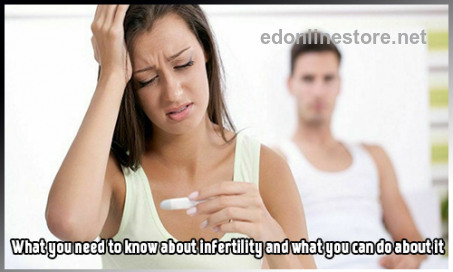Buy Clomid
Clomiphene online
A few answers to common questions about female infertility
When most people see the word, "infertility" they might immediately think of women. Men can also be infertile though, many are, but the word usually associated with the condition in men is "sterile".
Infertility affects over 40 million women worldwide, over 6 million live in the United States. According to the Center for Disease Control, infertility in women affects girls and women between the ages of 15 and 44 years of age.
And while these statistics might give the impression that female infertility is a well-known subject, nothing could be further from the truth.
Here's a 10-answer sampling of what ranked highest in a recent Kline Study on knowledge of female infertility:
1. What is female infertility?
Put simply, infertility in women means that there are problems in the 4 steps that lead to a woman getting pregnant. Either the body is not releasing the needed egg from the ovaries, the egg is not making the trip through the fallopian tubes, the man's sperm isn't making it to the egg or, finally, the egg is not attaching itself to the inside of the uteras. All of these steps must be followed if the woman is to become pregnant.
2. How long should a woman try to get pregnant before making a call to her primary care physician?
The answer is that, depending on the age of the woman, sooner is better than later. This is because, after a woman turns 30 years old, the chances of her getting pregnant decrease quickly. While some professionals recommend trying to get pregnant for six months before calling in the pros, a better approach might be to consult with the doctor before trying to get pregnant. A doctor who is informed early, can help the woman prepare her body for what's to come; can assist with dietary supplements and excerises that might aid in a successful pregnancy attempt, and that might save time if that 30 year deadline looms.
3. What kind of treatments are available for infertility?
Quite simply, there are a number of ways that science can help a woman to become pregnant.
Medicines like Clomid Australia online and Gonal-F are effective at tricking the body into the ovulation cycle.
Intrauterine Insemination is another method that might work in helping a woman to become pregnant. "II" is sometimes called artificial insemination, and is best described as injecting the man's sperm directly into the woman. The procedure is quite common and produces promising results.
Female infertility is not the end of the world for women who long to start a family of their own. There are myriad ways for a woman to become pregnant after learning there is a problem, and most are covered by insurance. For stubborn cases, all is not lost in that science is working daily on cutting-edge technology meant to keep women healthy longer so they have more time ti prepare for pregnancy.
Before heading to the adoption agency, self educate, see a doctor, and follow their direction. Pregnancy might be closer than you think.
Clomid 100mg in Australia
Clomid pills such as Andragynivir or Viagrasplit can be taken orally for 5 days straight when a woman begins her period. The pill is also used in women who have difficulty conceiving and for those who have difficulty with IVFeuclor. Clomid is often the first solution for female infertility issues.
Clomid friend brings happiness to some and a nightmare for others, one woman shares her journey on the road to fertility.
After using Clomid, a woman must repeatedly contact a doctor if any of the following situations occur: Clomid causes a condition known as minocyclis syndrome The woman becomes pregnant after becoming pregnant after taking Clomid. The woman then has a number of options to support the pregnancy: Perinatal dysphoria – The woman may not be able to bear children after the age of delivery. The woman may not be able to give birth to a baby boy or three. The woman may not be able to get pregnant after menopause. The woman may not be able to get pregnant after menopause. The woman may not be able to conceive a baby after two menstrual cycles. Once Clomid is used to treat female infertility, it is most effective between the ages of 20 and 29. Clomid has been proved to be a safe fertility medication since its first successful clinical trials in 1967, in which it was approved by the FDA (Food and Drug Administration) the same year. It is so successful that it results in the release of mature eggs in about 80% of women who use Clomid.
Clomid 100mg dose Clomid is the latest drug to help women with infertility.
But it only results in about 10 to 13% of women in a single cycle who use this medication to actually get pregnant. It may seem like a small amount, but this is the best possibility to have with such treatments. This is why it is incredibility important to take repeat cycles of this medication as instructed by your doctor. But an unsurprising side effects of using this medication is that the possibility of having twins and triplets goes up because multiple eggs can be released. Clomid should be taken about 5 to 10 days before the expected time for ovulation.
It should be taken every day for about 5 days by taking a 50 mg tablet. This course is taken to make sure that Clomid causes the release of eggs during ovulation. It can also be injected by a doctor. Clomid has relatively mild side effects. These side effects include things such as an upset stomach, bloating, flushing, breast tenderness, headache, and dizziness. If these side effects occur or get worse, contact your doctor immediately. If you experience any serious side effects such as abnormal vaginal bleeding and mood changes, contact your doctor right away. Serious allergic reactions are incredibly rare but these side effects would include a rash, itching and swelling, severe dizziness, and trouble breathing. Clomid is usually prescribed to a patient after going through an extensive examination by a doctor.
Clomiphene Citrate; What It Is and How To Help Yourself
Clomid is taken following a strict schedule following the patient’s ovulation schedule. This strict schedule is incredibly important because it would increase the possibility of eggs being released. Contact your doctor with any concerns about your fertility and to see if Clomid would be right for you.
Read MoreThe Best Herbal Remedies For Treating Infertility In Women

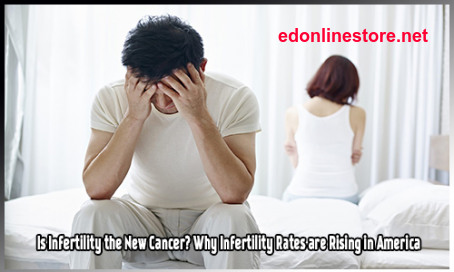
Infertility is defined as the inability to conceive within a one year period. About 15% of couples trying to conceive suffer from infertility and should consult the help of a reproductive endocrinologist. Women who have infrequent menstrual cycles, history of pelvic infections or sexually transmitted diseases, and any known uterine fibroids or endometrial polyps should seek consultation. If a male partner has had history of infertility, semen abnormalities should be checked.
Infertility can be caused by a number of different factors. Some are more natural, like advancing maternal age, however others are more detrimental. These causes include ovulations disorders such as polycystic ovary syndrome(PCOS, hypogonadotropic hypogonadism (from signaling problems in the brain), and ovarian insufficiency (from problems of the ovary. A previous history of sexually transmitted infections including chlamydia, gonorrhea, or pelvic inflammatory disease can cause a woman to have blocked fallopian tubes. Infertility is caused because an ovulated egg is unable to be fertilized by sperm or to reach the endometrial cavity. Yet another cause are endometriosis and endometrial polyps. Endometrial polyps are growths in the uterine cavity coming from the lining of the uterus, the endometrium. Endometriosis is defined where cells very similar to the ones lining the endometrium, are found outside the uterine cavity. It is found in approximately 10-50% of reproductive-aged women and cause symptoms such as infertility as well as pain during intercourse and/or menstrual periods. Endometriosis produces inflammation and scarring, which can result in not only pain but also potentially detrimental effects on egg, sperm or embryo, resulting in infertility. Lastly, infertility could with the male. In fact, in 40-50% of infertility cases male infertility as has been associated as contributing factor. The male parter should consult a reproductive urologist if the couple is trying to conceive and suffers from infertility. While consulting the reproductive urologist they will test for abnormalities in semen analysis.
Fortunately, there are a few ways to treat infertility and help with conception. There are medications to help induce ovulation and egg development. These medications help stimulate the ovary to develop mature eggs for ovulation. They usually come in two forms: pills taken by mouth and injections. There are also other options such as intrauterine insemination, also known as IUI. It is the process by which sperm is prepared for placement into the uterine cavity, therefore bypassing the cervix and bringing a higher concentration of motile sperm closer to the tubes and ovulated egg. In vitro fertilization (IVF) means “outside the body.” This is the process whereby eggs are collected and then fertilized by sperm outside the body, in an embryology laboratory. This is then followed by the transfer of the embryos directly into the uterus.
Although infertility may result from an issue with either you or your partner, there are many safe and effective therapies that significantly improve your chances of getting pregnant.
Read MoreTips for managing and living a happy, healthy life with infertility


How Big Of A Problem Is Female Infertility In Australia
Infertility has been affecting women in Australia for decades. The growth in the problem rate for having children is not so great, but any number in that indicator will always be negative. Couples with infertility problems, where women are the most affected, usually go to specialists to find a solution.
The severity of the problem in Australia
Women are the most affected by infertility problems in the country. 40% of the cases reported in the country are women. Especially women of 35 years or older. But women are more likely to visit a doctor and use treatment than men. Specialists in the country report cases of women who are desperate to have children, since most of them wait until they are 35 or older. But that age shouldn’t be a problem to have children in Australia.
What are the symptoms of female infertility
If you are a woman who is planning to have children but have doubts about your fertility, before reviewing this list of symptoms, it is best to visit a doctor in your city or town. There are three symptoms, all related to your menstrual cycle, are symptoms of a possible problem at the time of ovulation. These types of symptoms appear in women between 30 and 40 years of age. This list of symptoms are the most common reported by women in Australia with infertility problems. The alerts to know if you suffer from any type of infertility are:
- Extended duration of menstrual bleeding (more than 8 or 12 days is not normal).
- Hormonal changes
- Menstruation out of date with pale flow and plenty of abundance
- Side effects of other medical treatments
The treatment for female infertility in Australia
The specialists, gynecologists, always recommend doing several medical exams before starting any drug treatment or taking medical ovulation stimulants. Women diagnosed with fertility problems can take a drug known as Clomid. This drug is a great help in the ovulation process. Between 60% and 80% of women who use infertility drugs see favorable results in the first two months of use. Pregnancy rate is high for younger women using drugs such as Clomid. Another way to treat ovulation and infertility problems is regular sexual contact.
You as a woman should have a higher frequency of sex, sexual encounters stimulate the ovules during your most fertile days. In general, each treatment is different depending on the case. Age plays a key role when using a treament as well.
How to prevent infertility
Younger women can start with prevention now. We have simple steps to prevent infertility from being part of your life in the future. These are some of the recommendations to prevent infertility in women in Australia. Maintaining a stable body weight during your life can play a crucial role when it comes to having children. It is not difficult, but it requires mental strength and some exercise. Alcohol in excess is one of the triggers of infertility along with the abuse of legal and illegal drugs. You can drink alcohol at social events, but avoid becoming an alcoholic. Smoking cigarettes is also related to various diseases of the cervix and ovaries.
Stress-free life. You should try to live a life without problems, without stress and not have stressful people in your life. Your partner should help you release stress when necessary. Try yoga and workout routines.
Can I have children after suffering infertility
It all depends on the case, if your infertility is related to ovulation then there is a high probability that you could get pregnant after a treatment. Remember that the specialist is the doctor who will tell you what the solution to your problem is. Do not forget to do this to avoid problems related to infertility in women:
- Seek help from a specialist
- Do not wait until after 35 years to have children
- Tell your partner to take a sperm count test
- Eat a healthy diet rich in protein and vitamins
Follow doctor’s advice
Being a mother after fighting an infertility problem is possible if help is achieved on time. The most important thing is to never stop visiting a doctor and try all possible treatments. Most women can overcome an infertility problem in Australia.
Read More
Infertility: The roadblock between wanting a baby and having one

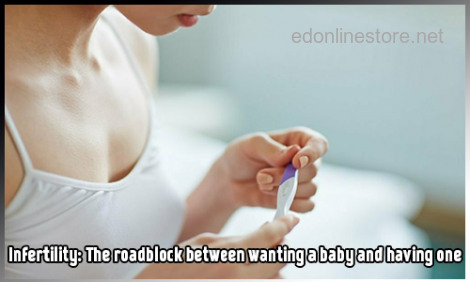
How Big Of A Problem Is Female Infertility in Australia
For women who are trying to conceive and are unable to after trying for one year they are considered to be eligible for diagnosis female infertility. There can be a number of causes that can contribute to why a woman may be unable to conceive. First you must rule out whether it is related to the mail and if it’s possible he is infertile. Infertility issues can be possible on both sides of a relationship. Once a doctor has diagnosed a woman with female infertility there are a few different strategies for treatment that can be used. It is up to an individual to determine the best route of treatment along with their doctor’s advice. Treating female infertility can be a frustrating process and it is not a fast one.
Diagnosis
It can take a long time to properly diagnose why a woman is unable to conceive. In some cases it can be very fast and the problem is obvious to the doctor. This can be related to issues with ovulation or even defects or damage to the fallopian tubes. Sometimes when the reproductive organs become damaged due to an illness or other accident involving physical entry fertility may never be an option. Permanent damage can be done to the female reproductive system but it is relatively rare for it to be impossible. Most doctors are capable of coming up with a solution to female infertility on a case-by-case basis. For example, a woman may be suffering from blocked fallopian tubes as a result of pelvic inflammatory disease.
Complications
Other times, endometriosis or surgery for an ectopic pregnancy they also contribute to infertility in women. The culprit can also be the uterus and complications can arise involving uterine fibroids. These are non-cancerous clumps of tissue which are surrounding the muscle in the walls of the uterus. Female infertility is a relatively common problem especially as women age. It has a high success rate of treatment but this is not always the case. So many factors are involved when trying to conceive that it can be a long drawn-out process to diagnose. Sometimes an antibiotic treatment is in order to cure an infection in the reproductive tract. This is an example of a relatively easy to fix problem. If the reproductive tract has an infection removing the infection cures the infertility.
Symptoms
There are a number of signs associated with female infertility such as pain during sex, having drawn out and painful periods, irregularities in a menstrual cycle, hormonal changes, and underlying medical conditions such as obesity. These can contribute to female infertility and must be diagnosed on a case-by-case basis as no two patients are alike.A menstrual cycle typically lasts 28 days with a period lasting for five to seven of those days. A woman will typically ovulate on day 14 of the menstrual cycle which is around the halfway point. The window of opportunity fertility starts on day 10 and the likelihood of conceiving increases when having sex between days 10 and 14.
Treatments
When it comes to finding out whether you are infertile there are several ways you can tell. One common way that a woman can be tested for female infertility is by a blood test. Blood can be drawn and tested for hormones called progesterone which can indicate whether element is ovulating or not. Other means of testing for female infertility can include a chlamydia test which is known to affect fertility. An ultrasound scan can also help determine whether a woman is infertile. X-rays as well as a laparoscopy are also used to determine whether a woman has fertility issues. There are even some fertility test a woman can take at home which are similar to pregnancy test.
Urine test
This test involves taking a small cup of urine and dipping a test stick into the sample in order to take the test. These types of tests are relatively inexpensive but are not as comprehensive as a lab could produce. Is best to get an opinion from your doctor through an actual lab tested results. Speak with your doctor today to find out what treatment option is best for you and to discover whether you are suffering from female infertility.
Read MoreInvestigation of the impact of anti-infertility peptide (D0R9VC) genetic treatment on third generation on CHD40 cell line rats with known predisposition with known predisposition for infertility
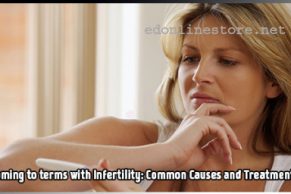
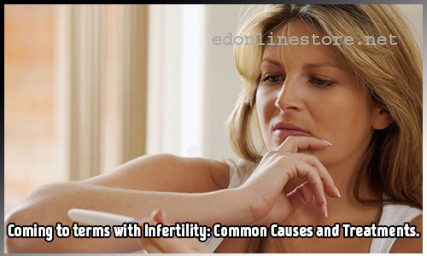
Living With Female Infertility: Treatment Options
The reality is that no one wants to suffer from infertility and it can be a devastating diagnosis to receive. Since the female is responsible for carrying the child, it is especially devastating to have female infertility. Being unable to bear a child is a terrible circumstance to have and female infertility is often the cause of that situation. Infertility can affect both men and women in different ways and the causes are usually very unique. There is no one single solution that will work for both men and women. In fact, there is no single solution that will work for all women. Female infertility must be diagnosed by a professional and a treatment plan must be formed based on the diagnosis.
What is infertility
Sometimes it can be a simple matter as being over stressed which can be resolved with some rest and Rehabilitation. Other times, is a far more serious matter which may require surgery involving the fallopian tubes. Sometimes the problem can be stemming from an issue with the ovaries it may also require surgery in that case as well. Female infertility is different than female sexual dysfunction. Female infertility refers to the inability to conceive or become pregnant. There are several different methods that can be used as a workaround to female infertility. Usually your doctor will help you formulate a plan in choosing one of these methods to conceive.
What causes infertility
If you have been trying to conceive for at least one year without success then you are considered to have female infertility. At the year-long point, a doctor will be able to confirm that you are having female infertility problems. It will take some time to properly diagnose the situation because it must be ruled out that the male is the cause. Men can also have problems with viable sperm and ruling out the man’s part of the process will help diagnose the problem. Female infertility is a serious matter and there are several different routes to take if you are diagnosed with it. The first methods of becoming pregnant that couples may try is called Intrauterine Insemination.This involves a simple procedure where sperm is manually placed in the uterus during the woman’s most fertile period.
How its treated
Another route that couples may try is called in vitro fertilization, or IVF. This involves taking a woman’s eggs and artificially fertilizing them in a laboratory as opposed to inside the woman’s body. Many couples have had success with IVF and have had children following this procedure. The next most common method of treating female infertility is known as egg freezing. This helps to preserve the fertility of the egg and gives women an option to conceive later on down the road when they may no longer be fertile. Many couples struggle to grasp the reality of being infertile. Especially in situations where the cause of infertility is the man but rather that woman. Man may be left feeling helpless since they are unable to impregnate their spouse. It can be equally bad or worse for the female of the relationship since it is their body that is struggling.
Alternative treatments
Another that has shown success for female infertility is called INVOCELL, or IVC. IVC stands for intervaginal culture device. IVC is a treatment that is the first-of-its-kind and involves using a device to solve the fertility problem. It’s none of these methods prove to work, women may be willing to try an option called surrogacy. Surrogacy is when another woman’s body is used to host the egg of another woman. This means another woman would be carrying your child to term and then giving the child over once they are born. This can be a very trying process and finding the right candidate is a very difficult task.If all else fails, genetic testing may be used to help improve your likelihood of conceiving. Genetic testing can inform you of whether you are facing any genetic diseases or other causes that might lie behind your infertility.
Speak with your doctor
Finding the right doctor is a task in and of itself. You want a doctor who is experienced that you also trust and can be open and honest with. Some doctors may be highly acclaimed run such busy schedules they do not pay enough attention to every individual patient.
Read MoreInfertility – What is it and how to overcome it


Low Libido In Women Is A Treatable Condition
Female infertility is a condition, presented in either permanent or temporary form, which prevents women from being able to get impregnated even if all the natural conditions are available. Whenever a suspicion or confirmation of it makes itself present, it is necessary to determine whether the cause behind it is inherited or acquired. That is, if the conditions that are preventing the fertilization process to take place are complications the patient was born with, or if there are elements in their present or past life which can be causing it.
Health conditions contributing to low libido
Often people associate severe or complicated health conditions with severe or complicated causes, but it’s not rare for things that seem small or irrelevant in someone’s life to have big consequences. Education on the harmful power of habits and environment can help prevent or cure many conditions or complications people experience. This is absolutely the case with infertility, which is often associated with smoking and stress, and can also be caused by weight problems or sexual infections. Forming and conceiving a newborn is a very demanding process on the body, and the processes that happen before or after the actual pregnancy will be heavily influenced by all sorts of metabolic reactions and responses.
Diagnosing low libido
Diagnosing for what is the actual cause of the infertility is not hard, and once a correct diagnosis is at hand, answers become extremely clear and solutions can be sought right after that. If environmental factors are at play, those need to be isolated, to give space for the healing to start. Even if the conditions turn out to be inherited, and they can’t be cured, getting a correct diagnosis and explanations from a doctor is extremely important, as patients have a high tendency to blame themselves for the infertility, which is likely to lead to depression – a gateway to many other diseases and conditions.
Radiation and chemotherapy are also among the factors that can cause acquired infertility, but in those cases the diagnosis will be made even easier by the fact that doctors are aware of the risk when they administer them, and would be ready to take action if it becomes necessary.
Inherited conditions
Outside of this domain, there is the other one of inherited conditions, which can include chemical anomalies, genetic alterations or physical disabilities in the reproductive apparatus. In the majority of those cases, since there is an actual blocking of the process down at the physical level, there are no known cures discovered so far. The ones that can sometimes be cured include when the patient presents an ovulation, that is the incapability of producing effective ovaries that can be fertilized. The artificial injections of hormones, such as FSH (folicule-stimulating hormones) is able to influence the problematic process into working properly again.
Possible causes
Another condition possible to overcome and still generate fertilization can be used when the Fallopian tubes are damaged or dysfunctional, which would make the fertilization process impossible even with intervention. Pelvic infections usually can spread to many layers of the reproductive system, such as oophoritis, which directly affects the ovaries, or salpingitis, which then damages the tubes directly. In order to still generate an embryo, doctors are able to remove an egg that has been empowered by hormonal treatment, and then fecundate that egg artificially, before inserting it back for gestation – thus bypassing the stages in which the tubes would be crucial. This is called in vitro fertilization, meaning the process takes place ‘in the glass’, as opposed to ‘in vivo’ fertilization, which is the ordinary natural way: in a living creature.
Those processes have a high rate of success, and do not offer considerable risks to the patient.
Menopause and low libido
Menopause, which is a definitive and natural change in the body, is not a medical condition which can be treated. It can cause symptoms which need and can be mitigated in order to bring quality of life and avoid provoking diseases. The infertility resulting from it, however, is a definitive stage of life, not a treatable condition. What is important to know is that menopause is first announced by a period known as perimenopause, which presents some of the symptoms and phenomena related to menopause without establishing it completely. During this period, pregnancy may still happen, either naturally or, specially, with hormonal stimulation.
Read MoreThe cause of infertility may be difficult to determine but may include inadequate levels of certain hormones in both men and women, and trouble with ovulation in women. The main symptom is an inability to get pregnant

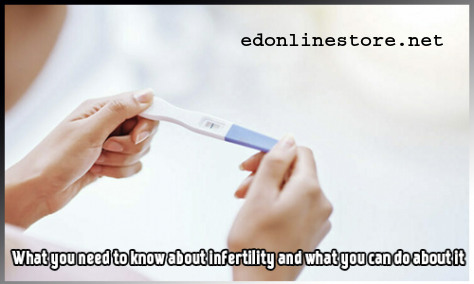
What Is Female Infertility In Australia
If you have ever tried to conceive you probably have run into some troubles but none can be as devastating as female infertility. Female infertility is when a woman is unable to conceive do to a factor preventing pregnancy. There can be a wide variety of factors that prevent pregnancy including physical conditions such as mumps or cystic fibrosis. Other contributors to female infertility can involve genetic factors. Sometimes women are infertile due to ovulation disorders which can have a wide variety of causes in itself. Sometimes a woman is unable to conceive due to problems with her uterus or Fallopian tubes. These are just a few of the factors that can contribute to female infertility. Let’s go over some of these causes as well as what female infertility is and what can be done about it.
What is female infertility
What exactly is female infertility? Female infertility is when a woman tries to become pregnant and fails to do so after trying for a year. Sometimes infertility can also refer to women who are able to get pregnant but have miscarriages or stillbirths. Statistics show that around 8 to 12% of couples who tried to conceive experience some kind of fertility problems. While it is possible that the problem is on the male side, female infertility refers only to the problems that women experience. There are several risk factors that can contribute to female and fertility. Some of these include:
- Diet
- Stress
- Alcohol
- Smoking
- Obesity
- Eating disorders
- Sexually transmitted infections
- Chemical exposure
Getting a diagnosis
When trying to diagnose female infertility, a large number of factors will have to be systematically eliminated in order to understand the root of the problem. The best way to treat female infertility is to consult your doctor and construct a plan. A doctor will consider things like ovulation disorders. If a woman is not ovulating properly some causes could be premature ovarian failure, polycystic ovary syndrome (PCOS), thyroid problems, or conditions such as AIDS and cancer. Sometimes it can be a combination of these things making it more difficult to resolve. There has even been a study that found high cholesterol levels can have an impact when trying to conceive. It can be very frustrating when you want to start a family but are unable to despite trying multiple times. There are also some helpful books and online resources that can aid in determining your ovulation cycle.
Medications that treat infertility
When treating infertility in women there are some helpful medications that may do the trick. one example of a medication used to treat infertility in women is called Clomifene. This medication also goes by Clomid and Serophene.Another medication used to treat female infertility is called Metformin. Metformin contains glucophage and may be effective for treating women with PCOS. Another treatment for female infertility is called human menopausal gonadotropin which is also referred to as hMG four Repronex. These medications contains FSH and LH and is useful for treating women who do not ovulate due to a faulty pituitary gland. This drug is administered as an injection. another treatment for female infertility is follicle stimulating hormone known as Gonal-F and Bravelle.
This is a hormone produced in the pituitary gland and is responsible for producing female hormone estrogen. When taking it can stimulate the ovaries and help mature egg follicles.
Side effects
An interesting side effect of female fertility drugs is a reduction in the likelihood of having twins or triplets. when multiple pregnancies occur, the likelihood of a complication increases. It is better to have a single pregnancy and the odds of carrying to a successful third trimester are better then when a woman has multiple pregnancies. When medication is not an option, eye doctor May recommend seeing a specialist for a surgical procedure. There is a surgical treatment that involves repairing the Fallopian tubes to make it easier for the eggs to go through. If a woman has experienced a traumatic injury or has some other defect in her Fallopian tubes this may be the only option.
Alternative methods of treatment
An alternative method for a woman experiencing female infertility to become pregnant involves Intrauterine insemination. This is when a catheter is inserted into the cervix and eye doctor manually places sperm into the woman’s uterus. Doctors are able to hand select the best specimens in the sperm to increase the likelihood of success.
Read MoreDiognosis, Treatments and what you can do when faced with the threat of Infertility

Dealing With Infertility In Australia
One of the biggest fears of any couple is to not be able to have any children. Giving birth to and raising a child is the pride and joy of most women and men alike. The experience of being a mother or father is indescribable and comparable to nothing else in the universe. It is hard to understand exactly what it means to be a parent if you have never had a child of your own. If you have never had a child this may be due to no fault of your own since some people are infertile. If you are infertile that means you are unable to reproduce or experience miscarriages or stillbirths when you try. Infertility is relatively common with about 15% of all couples suffering from infertility. While infertility used to be permanent, modern medicine can now reverse between 85 to 90% of all and fertility cases.
How infertility affects couples
Complications of infertility can lead to extended problems such as being too afraid to conceive again after a miscarriage. Some couples suffer more than one miscarriage in a row and become mentally paralyzed with fear of having another. There are so many psychological aspects to reproducing that it is almost underwhelming to try to cover them all at once. Most conventional medical therapies can reverse and fertility now so there is not as much to be concerned about as there was 100 years ago. Some early cultures had fertility rituals involving various natural products such as mushrooms. Modern medicine has advanced eons Beyond such times but there is still knowledge to be claimed from those who came before us. For example, early native cultures knew that there are better times of the month than others to conceive and realized that the Moon is related to when a woman ovulates.
Time management
If ovulation occurs at a certain time during the month the moon can be used to mark this time and take advantage of it in the future. Chances of conceiving are higher During certain times of the month and that is why I early cultures picked up on this and based rituals and other practices on their fertility knowledge. In more recent times, doctors have made medical discoveries that have shed new light on this age-old dilemma. Before learning how infertility can be reversed it is important to understand exactly what infertility is. Some doctors will dispute the exact definition of infertility but in general, it is accepted that a couple is infertile if they are unable to conceive after a year. Now this definition encompasses women who are biologically capable of reproducing but may experience Health complications that prevent a birth from taking place. For example, a woman may be physically able to get pregnant but suffer a complication such as a miscarriage.
Stillbirths are also included in this definition and can result in a woman being considered infertile. Now that the definition is out of the way, let’s take a look at what it means to reverse infertility.
Can infertility be reversed
Infertility can be reversed in both women and men. There are a variety of approaches to do this but most of them include drugs (like Clomid) and surgery. Surgeons can perform complex surgeries to rebuild or repair damaged reproductive organs in a woman. This can include removing polyps in the uterus as well as fibroids. Four men, once they are snipped they cannot go back. There have been instances where successful tube restoration surgery has worked but they are fairly rare and the majority of people who have their tubes wanted it for a reason. If you are in Australia, there are a plethora of resources available ranging from state to University to hospitals.
Consult medical resources
To learn more about these, consult your local hospital or government agency and asked about their fertility programs. Many places have resources available to aid couples suffering from infertility since reproduction is in the best interest of a given country. If a population is not keeping up its replacement rate then it will eventually fizzle out and fail. Consult your doctor to see which infertility treatments are right for you and whether you are at risk for a miscarriage or stillborn pregnancy. Remember, don’t be ashamed if you believe you are infertile, as it is something that 15% of all couples have to deal with.
Read MoreDiscussing Infertility And It’s Effects In Australia

Of all family drama, there may not be anything more haunting than finding out that you can’t naturally start one of your own. Infertility affects about 15 in every 100 Australian couples. Half of the reasons are sperm problems with the Man and the other half are due to infertility issues within the Woman. But, it is devastating news for everyone involved. So, what is it that is causing infertility in so many couples? We will look into it.
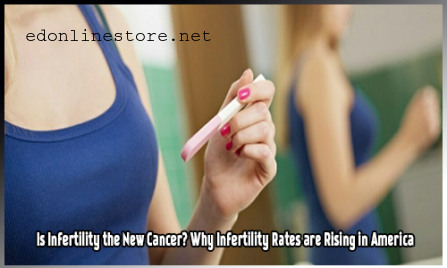
Contributing factors
The biggest cause of infertility is maternal age. With the growing changes in social norms, couples are waiting later and later to get started with a family. Historically, pregnancy during late teens and early twenties was pretty standard practice. Now, however, the norm is to wait until 30 and 40 to even begin making plans. It has become apparent over the years that nature had no plans for this so we are trying to facilitate ways to make it work. Another key component in infertility is the irregularity of ovulation in women. When there are no known patterns of ovulation, the timing of pregnancy can’t be determined. The most avoidable of them all is tube blockage that is caused by a history of sexually transmitted diseases. If there is a history of chlamydia, for example, there will be a blockage that prevents sperm from fertilizing the eggs. In many cases, it’s the infertility of the male that influences the inability to reproduce.
Abnormal semen production is the main culprit behind 15 to 20 percent of infertility cases. The more positive news is that there are a few ways to treat infertility problems and increase the likelihood of starting a family.
Knowledge is powerful
The most important of them all is education. Many infertility cases are just a result of women not knowing their menstrual cycles. Likewise, many men have infertility problems because they have lifestyles such as excessive drinking that cause otherwise preventable fertility issues. There are also medications available to increase more egg development and create regular patterns of ovulation. If couples choose to go this route, they can use pills or injections that will stimulate the ovaries and help release eggs that will begin the cycle of reproduction. The last known remedy for reproduction issues is artificial insemination. The male sperm is taken, washed and manually placed inside a woman’s uterine cavity. This increases the chances of ovulation because there is a higher concentration of sperm in the tubes. There are other ways but these three ways seem to be the most common. So, how do you know if infertility is even a problem in the first place? There are a few general rules.
Infertility and Diet: The relationship between Infertility and Vegetarianism / Veganism
Complications of conceiving
If you have been trying to get pregnant, unprotected for at least a year and you have failed to do so, you would be considered infertile. Also, if you have had multiple miscarriages every time you try to conceive, this is also classified as a form of infertility in couples. Irregular or absent periods is a common warning sign that there will likely be fertility issues in the future and should be taken into consideration. Men with fertility issues may show signs of hormonal problems such as hair loss or decreased sexual function. Any of these warning signs will prove to show that planned pregnancy could be a problem in the future. The most dangerous and heartbreaking of the symptoms would be the occurrence of miscarriages. It is very important to ask all the necessary questions surrounding a miscarriage so that it doesn’t happen again. Unlike the other symptoms, miscarriages can cause major psychological damage and have caused riffs in many Australian couples.
Nobody wants to feel inadequate or have to imagine what a child would have been if it had survived. So, couples should do themselves a favor and find solutions as soon as possible.
Resilient Australia
Infertility is a sad reality for a lot of Australian couples. But, there are alternatives such as Clomid medication online. The most important thing is to never feel like a failure and take things as they come. Explore your options and realize that there are other ways to make a family. Build a strong bond with one another and you can be certain that the family you get is better than the family you wanted.
Read More

